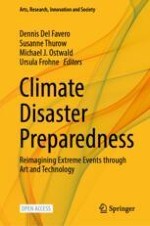
Open Access 2024 | OriginalPaper | Buchkapitel
4. Intelligent Architectures for Extreme Event Visualisation
verfasst von : Yang Song, Maurice Pagnucco, Frank Wu, Ali Asadipour, Michael J. Ostwald
Erschienen in: Climate Disaster Preparedness
Verlag: Springer Nature Switzerland
Aktivieren Sie unsere intelligente Suche, um passende Fachinhalte oder Patente zu finden.
Wählen Sie Textabschnitte aus um mit Künstlicher Intelligenz passenden Patente zu finden. powered by
Markieren Sie Textabschnitte, um KI-gestützt weitere passende Inhalte zu finden. powered by